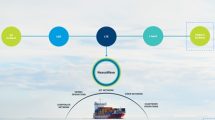
By Nabil Ben Soussia, CCO, IEC Telecom Group.
In an era where technology and innovation are at the forefront of addressing global challenges, the deployment of Low Earth Orbit (LEO) satellite systems marks a transformative leap in humanitarian relief efforts. These advanced satellite networks enhance communication capabilities, crucial during disaster response and aid distribution, particularly in Africa’s remote and conflict-ridden regions.
The UAE has a longstanding dedication to aiding those in need. The nation has consistently extended its support to neighbouring and developing countries, channelling substantial aid funds through its various ministries, from delivering food aid to refugee camps to funding educational and healthcare projects. One of the recently launched campaigns is the Zayed Humanitarian Legacy Initiative, which has allocated AED 20bn ($5.45bn) for humanitarian works in the world’s most vulnerable communities. The UAE aims to empower communities to drive positive change, creating a lasting legacy of compassion and impactful global outreach.
This spirit of global connectivity and support extends into technological advancements, the cornerstone of getting every community online. The global digital transformation market is projected to grow from $2.71tn in 2024 to $12.35tn by 2032, at a CAGR of 20.9% during the forecast period. With 45% of Africa’s population living more than 10 km away from any fibre-optic network infrastructure, satellite communications offer reliable and secure coverage to take advantage of opportunities for digitalisation. In fact, according to the African Space Industry Annual Report 2019, satellite communications generate approximately $6.5bn in Africa annually.
In the humanitarian sector, satellite communications contribute considerably to relief efforts in areas without reliable cellular service – from portable connectivity kits for first responders and drone surveillance to coordination of food distribution and e-learning programmes. Digital technologies are facilitating aid operations like never before.
The advent of LEO connectivity solutions enables improved access to aid services even in the most remote parts of Africa. The implementation of new LEO systems in Africa has the potential to revolutionise humanitarian relief efforts by providing advanced connectivity for real-time data collection, remote sensing capabilities, digital healthcare support, enhanced coordination, and improved logistics. Such advancements can help address the challenges faced during relief operations and ultimately save more lives in times of crisis.
Modern digital applications are being constantly developed to serve humanitarian operations and require low latency – greatly enhanced by LEO connectivity. LEO networks can offer latency as low as 40 milliseconds as opposed to 180 milliseconds on MEO and 600 milliseconds on GEO networks. This is essential for real-time applications, forming the cornerstone of digitalisation. The fast speed of LEO networks, combined with low latency improve email service, support videoconferencing, and enable fast data exchange, unlocking the way for AI and other advanced tech for remote areas.
Cyber security is one of the key requirements for humanitarian communications. The architecture of LEO eliminates many high-level interference risks, yet certain threats have to be treated on the ground. Humanitarian organisations need to stay in control of traffic consumption. The majority of cyber risks originate from the unintended misuse of infected devices. Considering the complexity of humanitarian operations, the role of network management increases exponentially.
Today, LEO technologies enable humanitarian staff members to browse a satcom network akin to GSM. This is, of course, a major development. Internet access is an important factor in securing healthy working conditions for humanitarian staff engaged in long-term projects. Connectivity in the field is the gateway to socialisation, enabling humanitarian operatives to stay in touch with loved ones, keep abreast of international news, access e-learning programs, and more.
However, for operational centres, the growing number of personal connections means increased vulnerability to cyber threats. Modern network management systems offer a dependable solution. The corporate environment, used for mission-critical operations, can now be isolated from staff and third-party browsing, eliminating the risks of cross-contamination. ICT terminals get more compact year after year. In the past, network segregation was only possible as an element of long-term camp infrastructure. Today, the exact same functionality is offered via portable devices, which can be used for first-response operations and vehicular missions.
Moreover, today LEO connectivity enables field missions in Africa to operate like remote offices. And the impact goes far beyond increased operational efficiency. Humanitarian stations can become “connectivity hubs” that extend the benefits of digitalisation to remote areas. From mobile clinics to e-school services and legal consultation centres to remote expert guidance opportunities, enabled by connectivity, the spectrum of accessible aid operations can increase exponentially.
By enabling new social services for underserved communities in Africa, NGOs and IGOs help remote communities access resources previously reserved for urban citizens, spreading equality and boosting economic development. According to the African Development Bank, every 10% increase in broadband penetration is expected to increase the GDP by 2 – 3%. LEO-based solutions are well-positioned to bridge this digital divide and unlock the growth and development opportunities in African communities.












Add Comment